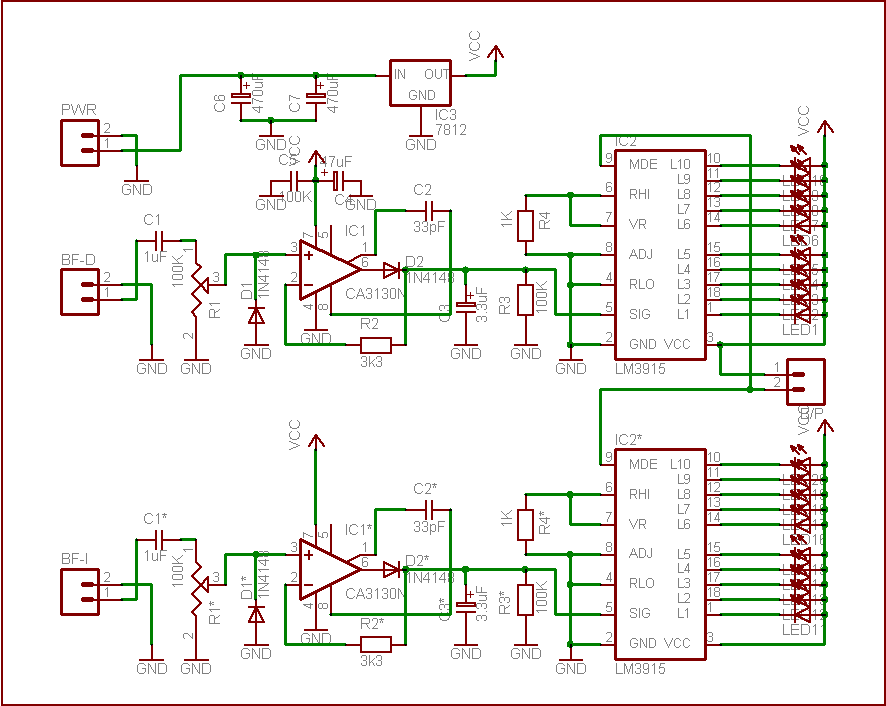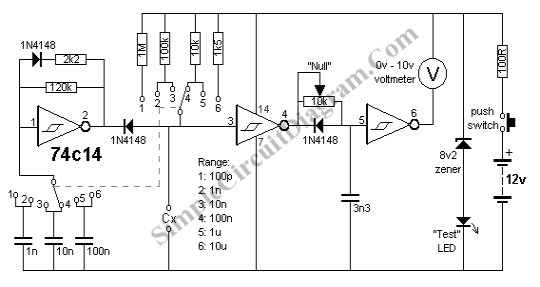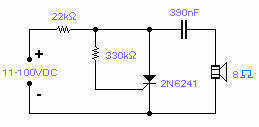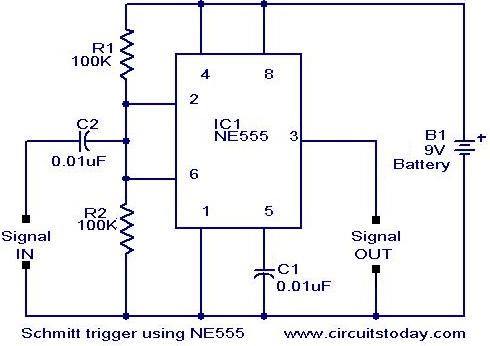
A Simple VU Meter using LM3914
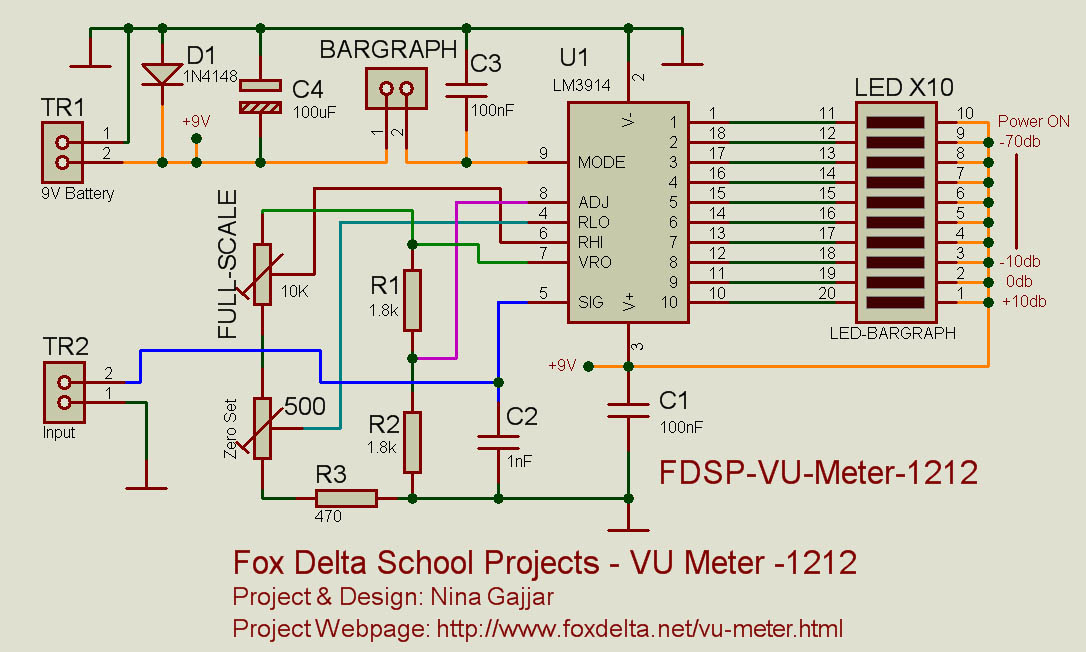
This simple VU meter can be utilized in a variety of projects. Since traditional electromagnetic VU meters are either no longer available or prohibitively expensive, this design employs the LM3914 integrated circuit and ten LEDs, allowing for versatile application in various projects.
The VU meter circuit utilizes the LM3914, a voltage level indicator that can drive up to ten LEDs in a bar graph or dot mode configuration. The circuit operates by measuring the audio signal level and displaying it visually through the LED array. The input audio signal is typically fed into the LM3914 through a suitable coupling capacitor to block any DC component, ensuring that only the AC audio signal is processed.
To construct the circuit, the following components are required: an LM3914 IC, ten LEDs, resistors for setting the LED current, a potentiometer for adjusting the sensitivity, and a capacitor for AC coupling. The LEDs should be connected in parallel with appropriate current-limiting resistors to prevent excessive current flow that could damage them. The sensitivity potentiometer allows for fine-tuning of the input signal level, enabling the user to calibrate the meter based on the specific audio source being monitored.
The power supply for the LM3914 should be a stable DC voltage, typically between 3V and 25V, depending on the configuration. The circuit can be powered using a battery or an external power supply. The output from the LM3914 provides a visual representation of the audio signal's amplitude, allowing for easy monitoring of audio levels in various applications, such as audio mixing, live sound reinforcement, or home audio systems.
This VU meter design is not only cost-effective but also straightforward to assemble, making it an excellent choice for hobbyists and professionals alike who require a reliable audio level indicator.This simple VU Meter may be used in variety of projects. Since real electro magnetic type VU Meters are no longer available or too expensive, I decided to make this one using LM3914 and 10 LEDs, which I can use in my other projects. 🔗 External reference
The VU meter circuit utilizes the LM3914, a voltage level indicator that can drive up to ten LEDs in a bar graph or dot mode configuration. The circuit operates by measuring the audio signal level and displaying it visually through the LED array. The input audio signal is typically fed into the LM3914 through a suitable coupling capacitor to block any DC component, ensuring that only the AC audio signal is processed.
To construct the circuit, the following components are required: an LM3914 IC, ten LEDs, resistors for setting the LED current, a potentiometer for adjusting the sensitivity, and a capacitor for AC coupling. The LEDs should be connected in parallel with appropriate current-limiting resistors to prevent excessive current flow that could damage them. The sensitivity potentiometer allows for fine-tuning of the input signal level, enabling the user to calibrate the meter based on the specific audio source being monitored.
The power supply for the LM3914 should be a stable DC voltage, typically between 3V and 25V, depending on the configuration. The circuit can be powered using a battery or an external power supply. The output from the LM3914 provides a visual representation of the audio signal's amplitude, allowing for easy monitoring of audio levels in various applications, such as audio mixing, live sound reinforcement, or home audio systems.
This VU meter design is not only cost-effective but also straightforward to assemble, making it an excellent choice for hobbyists and professionals alike who require a reliable audio level indicator.This simple VU Meter may be used in variety of projects. Since real electro magnetic type VU Meters are no longer available or too expensive, I decided to make this one using LM3914 and 10 LEDs, which I can use in my other projects. 🔗 External reference
